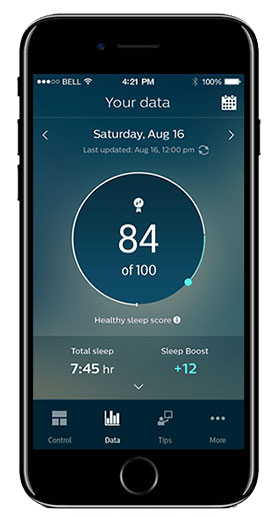

Roughly the size of a SD card and lighter than a nickel, the device includes both a blood oxygen sensor and an accelerometer to monitor both breathing and positioning during sleep.

Instead of wearing the device on the wrist, or clipped onto clothing, the SleepTuner is placed directly onto the forehead via medical-grade hypoallergenic adhesive stickers. Today’s consumers have become more familiar with health tracking devices and wearables over the years, but Beddr has designed a different kind of tracker with its new SleepTuner. In fact, the sleep-tech section of the show has grown by 22% since 2018, “making it one of the fastest-growing concentrations in the hot digital health, wellness and fitness area.” Instead of focusing on the lifestyle or convenience aspects of sleep tech, this year’s products are much more centered on sleep health, gathering “valuable intelligence on our sleep patterns and needs” and then providing active solutions to optimize sleep quality.įrom high-tech wearables and breathing monitors to smart beds and even a “digital detox” tool, we’ve highlighted some of the most interesting sleep technologies on display at CES 2019. Just last year, we wondered if CES represented “the future of the bedding industry – or simply the latest passing fads?” But this year, there is no question that the relationship between sleep and technology not only exists, but it is only getting stronger. In years past, the fact that bedding companies had any sort of presence at this event was news in and of itself. With more than 100,000 industry attendees flocking to the event each year, CES is known as the preeminent showcase for technological innovation. You will have to remove the sensors, as well as plug the headband in the charger.As the winter Las Vegas Market nears, it’s time again to look towards the city’s other major product showcase: the Consumer Electronics Show. When you wake up, you have to detach the connector and have to inform SmartSleep that you are not sleeping. You have to listen to beep to ensure the sensors and headband is synced well. The device can be switched on with a single button. The speakers must be adjusted in the correct position over the ears.

Once these sensors are applied behind the ear, the headband has to be worn and the SmartSleep connectors must be connected to the corresponding sensors. Philips warns that there could be a negative effect on the overall performance of the tracker in case the sensor is used past the three-day limit which is recommended. These sensors will cost about $30 a pack, thereby making it quite inconvenient especially when you have to stock it up. However, SmartSleep, need two replaceable sensors which are placed behind your ear and get connected to the headset. There are many sleep trackers available in the market which have in-built sensors thereby eliminating any extra costs. On completing the setup, you can begin tracking as well as analyzing the quality of your sleep.


 0 kommentar(er)
0 kommentar(er)
